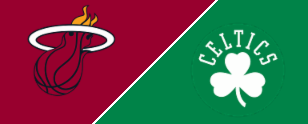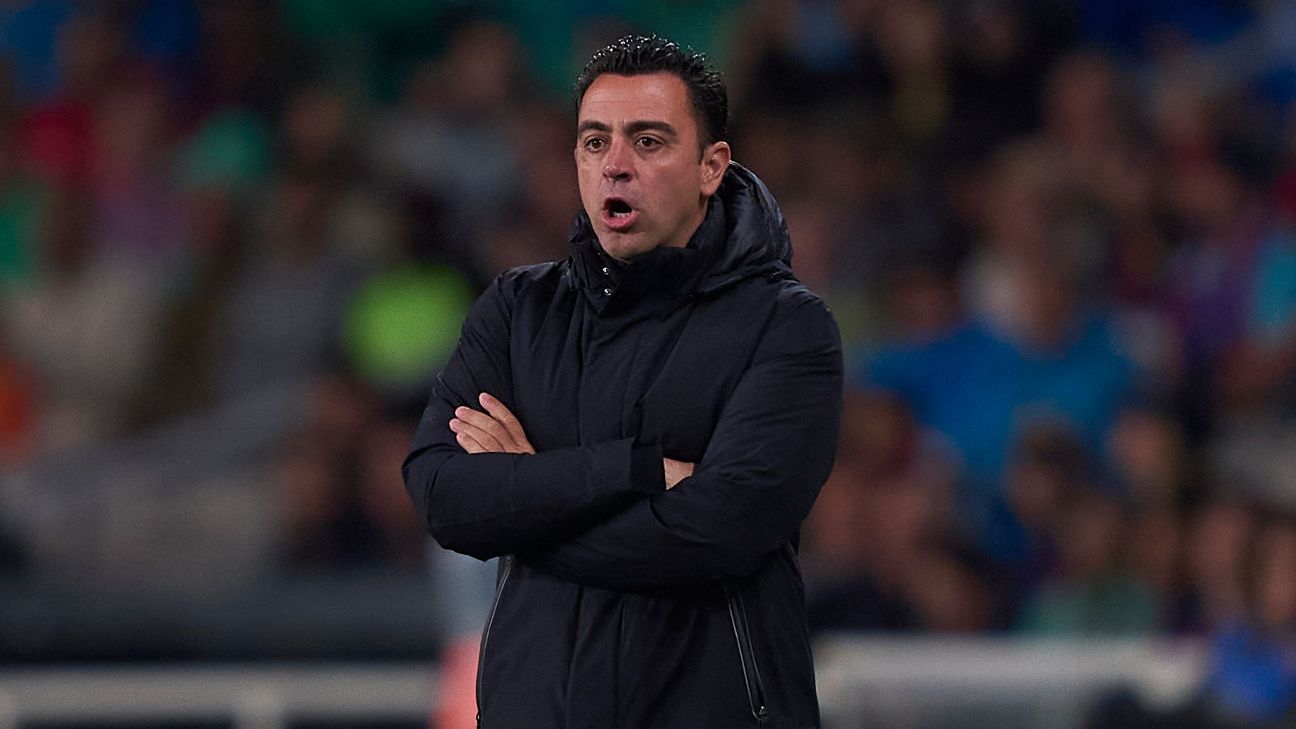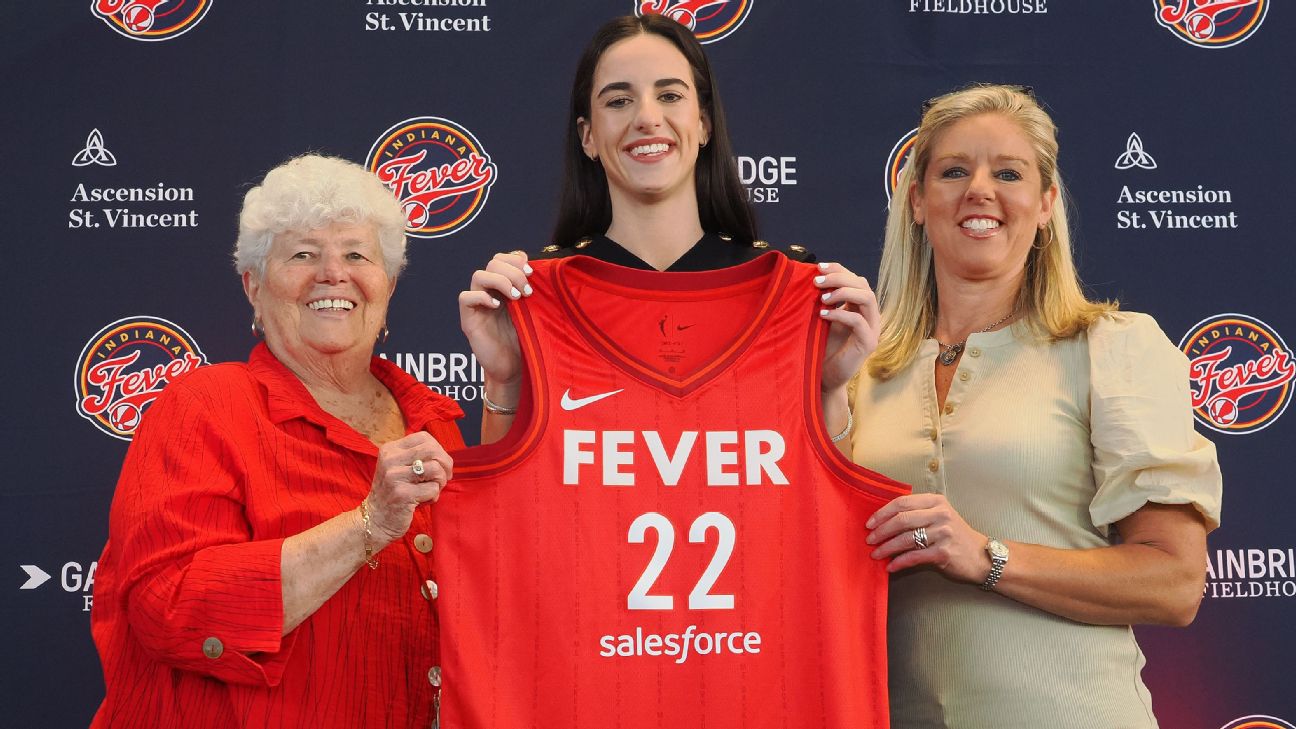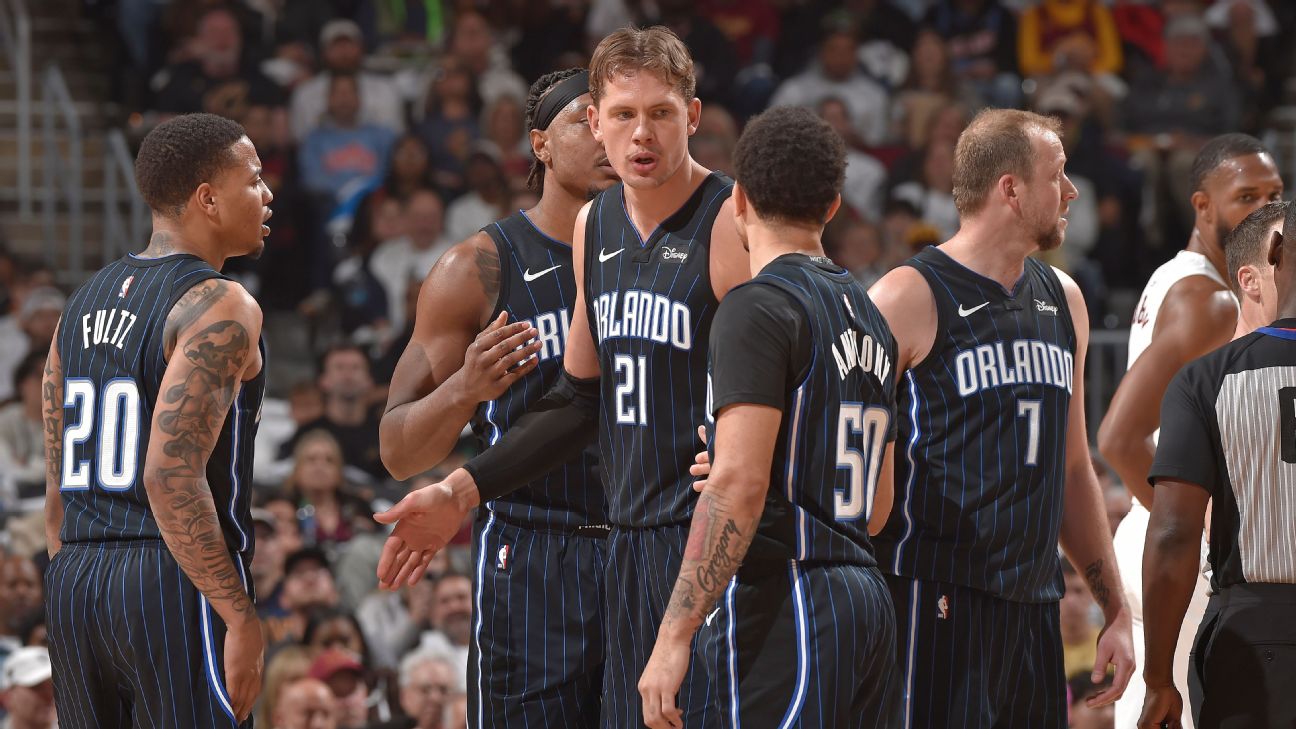![Eloy Jimenez [608x342]](https://a.espncdn.com/photo/2024/0422/r1322908_608x342_16-9.jpg)
Why St Pauli-Hamburg rivalry is one of a kind and how Bundesliga can benefit
The Chicago White Sox have a chance to make history in 2024 -- and not the good kind. A season of despair has already taken root on the South Side.
With only three wins in their first 22 games, this team appears primed to make a run at the 1962 New York Mets, who finished 40-120, still the modern record for most losses in a season. There have been challengers to that level of ineptitude -- 12 teams since have lost at least 110 games, with the 2003 Tigers coming closest at 119 losses -- but no one has surpassed that long-held mark ... yet.
The Mets in 1962 managed a .250 winning percentage -- almost 100 points better than what the White Sox have managed so far (.120). On Monday, the White Sox lost 7-0 to the Twins, Chicago's eighth shutout in its first 22 games. That had never been done before, not by the '62 Mets (who were shut out only six times all season), not in the Year of the Pitcher in 1968, not even back in the deadball era when teams might hit seven home runs a season.
"It's not going to get any easier tomorrow," White Sox manager Pedro Grifol said after the team's seventh shutout, a 7-0 loss to the Phillies on Friday. "It's not going to get any easier on Sunday. We have to find ways to put good ABs together, execute and step on home plate."
Their hitters have looked helpless at the plate so far, with the team hitting .190 and slugging .285, both worst in the majors. The bad start -- albeit, not helped by the loss of key contributors like Luis Robert Jr. and Yoan Moncada -- is a strong indicator that they have a chance at catching the '62 Mets.
Of course, two years ago the Cincinnati Reds started 3-22 before finishing 62-100. Last season, the Oakland Athletics looked like strong worst-ever contenders after a 5-23 start (they finished at 50-112). Could Chicago actually make a run at 121?
Let's dig into some numbers the White Sox have posted through 22 games, compared with historical rates over the same time frame, to see what it tells us about how bad their situation really is.
Run differential2024 White Sox: minus-78
1962 Mets: minus-44
Worst since 1962: 2023 Oakland A's (minus-103)
Ah, yes, just a year ago we were writing a similar article about the A's -- with good reason. They started 4-18 with a ghastly 7.97 ERA over a span that included losses of 18-3, 17-6, 13-1, 12-2 and back-to-back defeats of 11-0. They were 12-46 through the first two months, a 34-128 pace, before slowing the bleeding.
What it means for the White Sox: Ten teams since 1962 had at least a minus-60 run differential through 22 games and, not surprisingly, each finished with a losing record. That group includes those A's, the 2003 Detroit Tigers and the infamous 1988 Baltimore Orioles, who lost their first 21 games with a minus-85 run differential before rallying to finish 54-107.
Run differential can be misleading early in the season since a couple of bad blowout losses can skew the numbers -- but when you're this bad, it's not a good sign. Of the 50 worst differentials since 1962 through 22 games, only the 1979 Indians finished with a winning record -- and just barely, at 81-80 -- while 26 finished with at least 100 losses. The White Sox franchise record for most losses in a single season is 106 set in 1970. Even if they don't challenge the '62 Mets, the 2024 White Sox certainly have a chance to become the worst team in franchise history.
Runs2024 White Sox: 45 runs
1962 Mets: 92 runs
Worst since 1962: 2004 Expos (40 runs -- no DH); 2003 Tigers (49 runs -- with DH)
The Mets scored more than four runs per game early on -- still below the National League average of 1962, but respectable -- and they had some decent offensive players that season. The 2004 Expos, in their final season in Montreal, got off to a 5-17 start thanks to a miserable .208/.260/.292 line with 10 home runs. The Tigers stand out because the 2003 American League was a high-scoring league, averaging 4.86 runs per game; Detroit wound up averaging 3.65 runs per game, scoring more than 100 fewer runs than the second-lowest scoring team.
What it means for White Sox: Well ... it's not good. As mentioned, injuries have played a part: Robert and Moncada are on the injured list and Eloy Jimenez missed 12 games early on. But their April 12 lineup against the Reds was as bad as any lineup I've seen in my years as a baseball fan. Lenyn Sosa was hitting second; Kevin Pillar, who has a .263 OBP over the previous three seasons, hit cleanup; a struggling and powerless Andrew Benintendi hit fifth; Paul DeJong sixth; and Korey Lee, the backup catcher, served as the DH.
All is not entirely lost here, though: After all, some of the worst offensive starts in recent decades came from teams that ended up making the playoffs. The 1973 Mets, 1981 Houston Astros and 1985 Los Angeles Dodgers all rank in the bottom 35 all-time of runs scored through 22 games and went on to division titles.
But those teams weren't as inept as the White Sox have been. What stands out the most is their lack of power in an era when more runs than ever are scored via the home run. The White Sox have just 11 home runs through 22 games. They're on pace for just 81 on the year -- far lower than the 124 the Cleveland Guardians hit last season, the lowest figure in MLB (the MLB average was 196). Robert and Jimenez have 30-homer potential, but Robert is probably out another six weeks or so, and Jimenez hasn't been healthy enough to hit 30 home runs since 2019. Moncada hit .315 with 25 home runs in the juiced ball season of 2019, but other than drawing a bunch of walks in 2021, he hasn't been the same offensive player since. Chicago needs those three healthy and producing just to have something resembling an MLB-caliber lineup.
Weighted runs created (wRC+)2024 White Sox: 63
1962 Mets: 80
Worst since 1962: 1963 Mets (69)
For this one, we're using season totals rather than a 22-game start. This is a better metric to evaluate a team's offense than raw runs scored, as it places the team in the offensive environment of the league and its home ballpark, with 100 being average. That means the '62 Mets were 20% worse than the league average. They were certainly bad, ranking in the bottom 3% of all teams since 1962, but the 1963 Mets were even worse. That team hit .219/.285/.315 and averaged 3.09 runs per game -- and even that is misleading, as the Mets played in the homer-friendly Polo Grounds and hit 61 of their 96 home runs at home. Last year's Rockies had a 78 wRC+; the White Sox were second-worst in the majors at 83.
What it means for the White Sox: Even with a healthy Robert hitting 38 home runs and Jimenez playing 120 games last season, the White Sox had a terrible lineup. That doesn't exactly raise the level of optimism for the rest of 2024.
None of this is a surprise, of course. New general manager Chris Getz basically doubled down on bad offense in the offseason with the additions of DeJong, Martin Maldonado and Nicky Lopez. The three veterans were brought in to bring some defensive stability to an awful defensive team, but none was expected to bring much offense. Maldonado hasn't had a wRC+ higher than 70 the past three seasons, DeJong was at 54 in 2022 and 66 in 2023, and Lopez was at 56 in 2023 and 77 in 2023. The White Sox seemed to be punting on offense even before the season began.
Besides the injuries, what's made things even worse for the team is the lack of production from Andrew Vaughn and Benintendi, two players who should be in the prime of their careers but are going backwards. Both are hitting .158, while Vaughn has no home runs and Benintendi has just one extra-base hit (a double into the left-center gap back on April 9). Though he was serviceable last season, Vaughn just hasn't developed into the on-base expert he was projected to be when he was drafted third overall in 2019. Benintendi is in the second year of a five-year, $70 million contract, and while he played through hand discomfort last season, he once again isn't driving the ball with any authority.
The one impact prospect in the upper minors was supposed to be shortstop Colson Montgomery, but he's off to a slow start at Triple-A and unlikely to make an impact anytime soon -- if not until 2025. Most of that Charlotte lineup is 30 years or older, as well, so there isn't much help to come from there. It's a mess.
Runs allowed2024 White Sox: 116 (5.40 per game)
1962 Mets: 141 runs (6.41 per game)
Worst since 1962: 2023 A's (178 runs, 8.09 per game)
Those Mets are only tied for 23rd for most runs allowed through 22 games since 1962, with last year's A's topping the 1996 Tigers (172 runs) for the worst total. The Mets' pitching improved slightly following their first 22 games -- they finished at 5.89 runs allowed per game. The White Sox, while ranking ahead of only the Astros in the AL in runs allowed, are not off to a historically awful start in this category.
What it means for the White Sox: While the offense can't remain this bad over the course of 162 games, there are reasons to believe the pitching staff could actually get worse as the season continues. The rotation ranks last in the majors with a 6.24 ERA. What happens over the course of the summer when the inevitable injuries and fatigue start piling up? While the 2023 A's at least had some interesting young pitchers to try out, Chicago's Triple-A staff -- which features former big leaguers like Brad Keller, Chad Kuhl, Jake Woodford and Jared Shuster -- has a 6.51 ERA. Again, not exactly a cause for optimism.
The bullpen has been the lone bright spot with a 3.72 ERA, ranking in the middle of the pack in the majors. Let's see if that can be sustained.
Total Zone rating of runs saved on defense2024 White Sox: minus-7 runs
1962 Mets: minus-79 runs (season total)
Worst since 1962: 1974 Cubs (minus-139 runs)
Not surprisingly, the 1962 Mets rank as a poor defensive team via the Total Zone metric -- one of the worst 50 since 1962. Last year's White Sox were the fourth-worst team in the majors at minus-50 runs.
What it means for the White Sox: This might be the one department that will keep the White Sox from challenging the '62 Mets. The defense, at least via the Total Zone metric, has been borderline acceptable, and that's without Robert running everything down in center field. While separating defensive value from pitching is an inexact science, the worst teams have mostly been terrible defensively.
Just take a look at the Total Zone metric for the teams with the most single-season losses since 1962:
1962 Mets (40-120): minus-79 runs 2003 Tigers (43-119): minus-43 runs 2018 Orioles (47-115): minus-47 runs 2019 Tigers (47-114): minus-103 runs 2023 A's (50-112): minus-60 runs 1965 Mets (50-112): minus-12 runs 2013 Astros (51-111): minus-69 runs 2004 Diamondbacks (51-111): minus-7 runs 1963 Mets (51-111): minus-74 runs
Of course, it's also possible that Maldonado, Lopez and DeJong don't hit well enough to remain in the lineup and their replacements aren't as strong defensively, dropping the defense down a notch or two. For now, however, and especially when Robert returns, the defense might be the saving grace.
Where does all this leave the 2024 White Sox?In this era of baseball, when teams are rebuilding or tanking or just plain sucking, they tend to be really bad. Just note the trend from the above list: Three of the worst five teams since 1962 have come since 2018 (and two teams in 2021 lost 110 games). That's bad news for the White Sox.
That said: They still have Robert, who was a 5.0-WAR player last season, coming back. With the missing time, he's unlikely to get there again in 2024, but maybe he can still get to 4 WAR. That begs the question: Is having one player of his caliber enough to keep the White Sox under 120 losses?
Here are the best players from those same teams listed above:
1962 Mets (40-120): P Roger Craig (3.0 WAR) 2003 Tigers (43-119): DH Dmitri Young (3.4 WAR) 2018 Orioles (47-115): SS Manny Machado (3.6 WAR, traded at midseason) 2019 Tigers (47-114): P Matthew Boyd (3.8 WAR) 2023 A's (50-112): 2B Zack Gelof and P J.P. Sears (2.6 WAR) 1965 Mets (50-112): OF Johnny Lewis (2.4 WAR) 2013 Astros (51-111): C Jason Castro (4.2 WAR) 2004 Diamondbacks (51-111): P Randy Johnson (8.4 WAR) 1963 Mets (51-111): P Carl Willey (4.3 WAR)
So, no, having Robert on the roster doesn't guarantee anything. Even all-time bad teams had at least a few good players. The 2004 Diamondbacks managed to lose 111 games even though they had the Cy Young runner-up in Johnson (and another solid starter in future Cy Young winner Brandon Webb).
Of course, maybe we're reading too much into a bad start here. Maybe Vaughn starts hitting, they get everyone healthy, Erick Fedde wins 14 games and the bullpen holds up all season. Maybe they don't even lose 100 games.
In that case, we always have the Colorado Rockies and Miami Marlins to consider.













